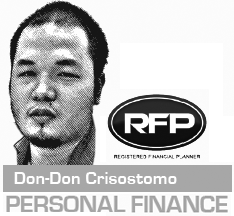How to Start a Balanced Investment Portfolio

One of the most impeding factors why many Filipinos are hesitant to make investments these days is the fear that their hard-earned money invested would not make profits and, worst, could be just taken away by a single market event. Managing risk is one of the most challenging work you will do throughout your investing voyage.
One key practice is to spread the risk in different investment vehicles. By putting eggs not in a single but in different baskets, you are balancing your portfolio and lowering your overall risk. Balancing your portfolio is also a mode of reflecting your own risk tolerance. It shows how you are able to bear certain market event that may affect the profits and the value of your assets. Nonetheless, you must know that markets go up and down.
Furthermore, these ups and downs are irregular and unpredictable, and are often the fear of many investors. When certain part of the market goes up, others can go down. When stocks go up, bonds can often go down. News could even impact investment vehicles differently. Even analysts and experts cannot give accurate details about what’s going next in the market.
What you are diversifying against is called non-systemic risk. Examples could be terrible company administration, drops in commodity prices, or changes in set of laws that hit individual companies, industries and countries variedly. Diversification is a good way to guard you against nonsystemic risks.
Three main ways to diversify are by asset class, geography or industry. The most imperative area of diversification is by asset class. When you invest, you can buy bonds, stocks, funds, or just hold certain cash. It is always an excellent idea to have a mix of all of these. Stocks tend to be more volatile and risky, while bonds are likely to be less volatile and more stable. Stocks and bonds lean to move in opposite cycles.
Most portfolios are balanced between stocks and bonds in order to control risks. This is where you tie in your goals and risk tolerance. If you have a conservative risk profile, it is suggested to hold more bond and cash, and reduce the fraction of stock. If you can accommodate greater risk, you can hold a larger proportion of stock.
A conservative investor could have a mix of 70-percent bonds, 20-percent stocks and 10-percent cash. For an aggressive investor, the holdings can be inversed; 70-percent stocks, 20-percent bonds and 10-percent cash. You can also diversify by geography. You can extend your investment across Europe, the US, Asia or the developing-nations market. By segmenting investments this way, a meltdown in Asia or a stock turmoil in the Philippines will pressure only a minute proportion of your portfolio.
Finally, you can diversify by industry. Many industries run in cycles so by this diversification method, you ensure that the total portfolio cannot be hit by a down cycle at the exact similar time. For example, by investing mutually in mining and manufacturers, low commodity prices will harm mining, but provide an advantage to manufacturers. Then, you can see a more controlled risk and return in your portfolio.
Mutual funds and UITFs offer an excellent way to diversify your portfolio. You can find a lot of types of these fund investment that provide an outright diversified portfolio by industry or asset class, and even geography. A sole fund can do a load of diversification especially when you are building your first portfolio. Whether it is an equity or stock fund, bond fund, or balanced fund, just make sure that it is aligned to your investment objectives.
It is always a good practice to revisit your balance every three months. Remember that value of your holdings will change over time, and you need to make sure if you are still in balance; and if you are not, you rebalance by selling some of the assets as well as buy if necessary.
Ask the help of an investment advisor. Give time for research to get insightful methodologies you could use in balancing your investments. Most importantly, put these in experience and not merely in theory.
Last, don’t forget the value trade off in investing; the higher the risk, the higher the return and the lower the risk, the lower the return. However, it is still a matter of how you manage investments to have a sound and balanced portfolio, where the goal of managing risk and return is met effectively and efficiently.
****
 Don-Don Adolfo Crisostomo is a Registered Financial Planner of RFP Philippines. To learn more financial planning, join the 59th RFP program in January 2017. To inquire, e-mail info@rfp.ph or text <name><e-mail> <RFP> at 0917-9689774.
Don-Don Adolfo Crisostomo is a Registered Financial Planner of RFP Philippines. To learn more financial planning, join the 59th RFP program in January 2017. To inquire, e-mail info@rfp.ph or text <name><e-mail> <RFP> at 0917-9689774.
Source: http://www.businessmirror.com.ph/how-to-start-a-balanced-investment-portfolio/
4,211 total views, 3 views today












Social